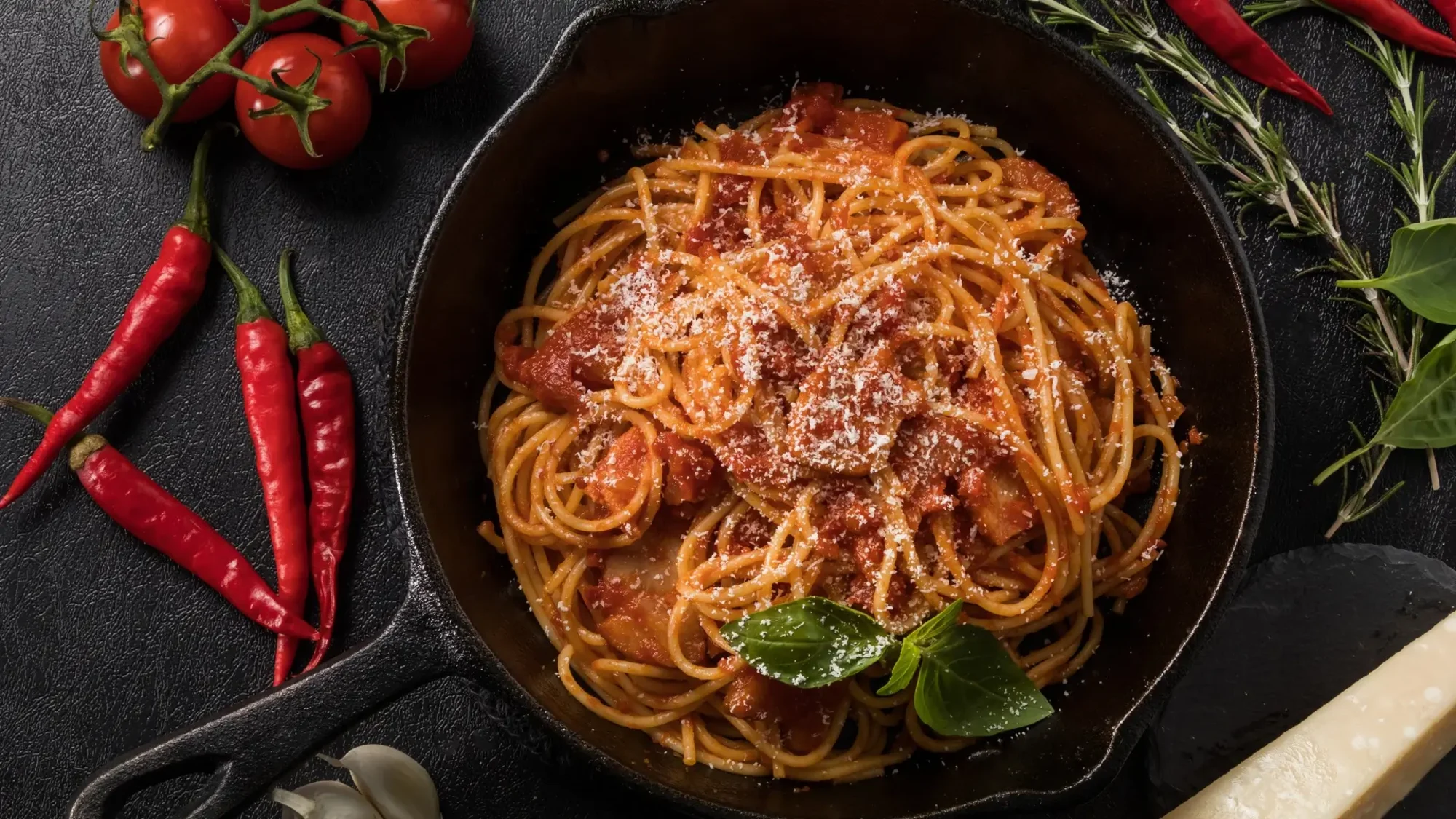
Bucatini Allamatriciana
Thick spaghetti-like pasta with tomato and guanciale sauce.
Ingredients
- •Bucatini pasta
- •Guanciale
- •Tomatoes
- •Pecorino Romano
- •Red pepper
Instructions
Cook Guanciale
Crisp the pork cheek in a pan
Make Sauce
Add tomatoes and simmer
Combine
Toss pasta with sauce and cheese
Bucatini all'Amatriciana is a classic Roman pasta dish that features thick, hollow spaghetti-like noodles (bucatini) tossed in a rich, spicy tomato sauce made with guanciale (cured pork cheek), creating a perfect balance of flavors that has made it one of Rome's most beloved pasta dishes.
This iconic dish originated in the town of Amatrice, located in the Lazio region of Italy. Originally, the dish was prepared by shepherds who could easily carry the preserved guanciale and dried pasta during their long journeys. The addition of tomatoes came later, in the late 18th century, transforming it into the red sauce version we know today.
To prepare authentic Bucatini all'Amatriciana, start by crisping small cubes of guanciale in a pan until they release their flavorful fat. The rendered fat forms the base of the sauce, to which crushed tomatoes and a pinch of red pepper flakes are added. The sauce is simmered until it thickens, then tossed with al dente bucatini and a generous amount of freshly grated Pecorino Romano cheese.
While traditionalists insist on using only guanciale, tomatoes, and Pecorino Romano, some modern variations include onions or garlic in the sauce. Some cooks might substitute pancetta for guanciale, though purists would argue this changes the dish's characteristic flavor. The level of spiciness can also be adjusted according to personal preference.
In Rome and throughout Italy, Bucatini all'Amatriciana is served as a primo (first course) in a proper Italian meal. It's often enjoyed in traditional trattorias, where it's typically paired with a full-bodied red wine from the Lazio region. The dish is served immediately while the pasta is hot and the sauce is still clinging to the noodles.
While undeniably delicious, this dish is quite rich and should be enjoyed in moderation. The guanciale contributes significant fat content, and the pasta is high in carbohydrates. Those watching their sodium intake should be mindful of the salt content from both the cured meat and the Pecorino Romano cheese. For a lighter version, you might consider using less guanciale or opting for a leaner cut of pork, though this would deviate from the traditional recipe.
